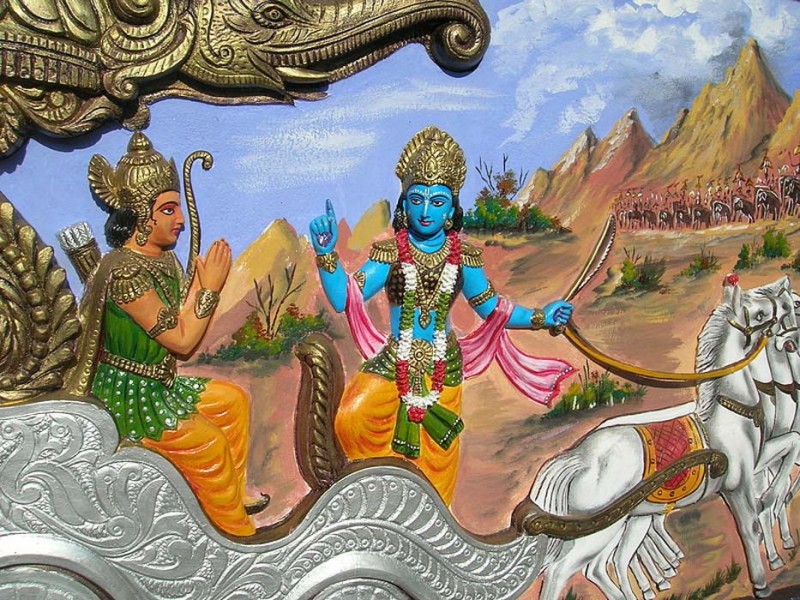
Bhagavata religion means a religion whose worship is God. The antiquity of this religion is proved in many ways. Gupta emperors felt proud with the title of 'Param Bhagwat'. This title is mentioned in his inscriptions with its name. The prevalence and popularity of Bhagwat religion in the first and second centuries of Vikrama is proved by inscriptions. In the first century BC, Kshatrapa Shodash (80-57 BC) was the ruler of Mathura. A contemporary inscription mentions that a person named Vasu had established a quadrangle and temple of Lord Vasudev in the Mahasthan (birthplace), Toran and Vedika (outpost). This is the first mention of the construction of Krishna's temple in Mathura. In that era, Vasudev was considered as Devadhidev (meaning also the god of gods) and his followers were famous by the name 'Bhagavata'.
Know why Lord Rama fiercely fought with his own son
A review of the sources of Maharishi Panini is undeniable evidence to prove the antiquity of the Bhagavata religion. Panini in his sutras has enacted the suffix n (ak) in the sense of a person who does devotion to Vasudeva, thereby evoking the word 'Vasudevak' for the Vasudeva devotee (Vasudevo Bhaktirasya). By the practice of this sutra, 'Vasudev' means unquestionably God, not the son of a Kshatriya named Vasudeva. In the commentary of Mahabhashya, Kayat says that the eternal God is derived from the word 'Vasudeva'. The Kashika confirms the same meaning. In the same tradition, the meaning of 'Vasudeva' has been taken as divine.
Know what are the benefits of keeping fish at home
The mention of the acting of 'Kansavadh' and 'Balibandhan' plays by Pantjali is clearly proving Krishna Vasudeva's unity with 'Vishnu', besides Weber, Keith, Grierson, etc are considered as Western scholars. It is proved by these evidences that in the era of Panini (in the sixth century BCE) the Bhagavata religion became prominent. In that era, the idols of Gods were also installed in temples or elsewhere. Megasthenes, the Greek ambassador of the court of Chandragupta Maurya, about three hundred years from Panini, mentions the worship of a deity called 'Heriklij' in an Indian race called 'Saurasenai' (Shaursen) allied with Mathura and Yamuna. 'Heriklij' is a symbol of gallantry, as a paradigm of valor, whether of Krishna, his worship is a doubtless proof of propagation and propagation of Bhagwat religion.